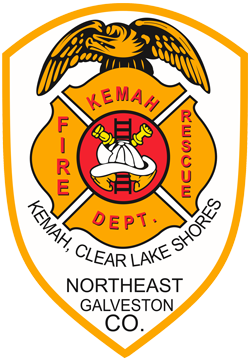June 1 through November 30 is hurricane season. Although Texas coastal communities face the greatest threat from hurricane events, inland communities can also be impacted. Stay weather aware, and learn how to protect yourself and your family before, during, and after a hurricane.
Hurricane Threats and Hazards
Hazards associated with hurricanes include storm surge flooding, inland flooding, destructive winds, tornadoes, and high surf with strong rip currents.
Hurricanes are powerful storms characterized by intense winds that begin at 74 mph and can reach up to 157mph or higher. However, despite the destructive capability of hurricane force winds, water is the deadliest component of hurricane events. According to the National Hurricane Center, 75 percent of all tropical cyclone related fatalities between 1963 and 2012 were due to storm surge and rain induced flooding. Remember flooding events can last for days following a hurricane’s initial landfall.
Tornadoes are also a common occurrence with hurricanes, posing a significant threat for both coastal and inland communities. Hurricane Beulah, which made landfall in southeast Texas in 1967, spawned 115 tornadoes. The National Weather Service reports tornadoes associated with Hurricane Allen, 1980, caused $100 million dollars in damages to the Austin area.
Hurricane Preparedness Tips
To help protect your family, home, and business during hurricane events keep the following preparedness tips in mind:
- Board up doors and windows with plywood or install storm shutters. Keep in mind that winds are stronger at higher elevations, such as high-rise apartments or condos.
- Bring in outdoor objects that could become deadly missiles, such as patio furniture, hanging plants, trash cans, gardening tools and barbecues.
- If your home is vulnerable to rising water, move furniture and valuables to a higher level.
- Before evacuating, cut off your electricity and turn off the gas. Downed electrical wires and broken gas pipes can be deadly and cause serious property damage. Make a final walk-through inspection of your home before leaving.
- Moor boats securely or move them to designated safe areas well in advance of hurricanes. Do not try to tow a trailer or boat in high winds.
- Assemble a family emergency supplies kit and have it ready to go at a moment’s notice. Find a list of suggested items for emergency supplies kits.
- When officials recommend or order an evacuation, leave. Do not try to ride out a hurricane in a high-risk area. Seek shelter inland with family or friends, at a hotel or designated shelter. Notify relatives and friends of your plans, and confirm hotel reservations.
- Find out where shelters are located along your route in case clogged roads prevent you from reaching your destination.
- Look at the evacuation maps for your area ahead of time.
Evacuation questions?
Visit our evacuation Q&A page for more information.
Time to evacuate? Don’t forget to plan for all of your family members, including children, seniors, those with functional and access needs, and your pets!
- Emergency planning for Texans with functional and access needs.
- Help your children plan and prepare for disasters like hurricanes before they occur by making a family emergency plan.
- More information on evacuating with your pet.
Additional Resources
For more information about preparing for hurricanes, please visit:

